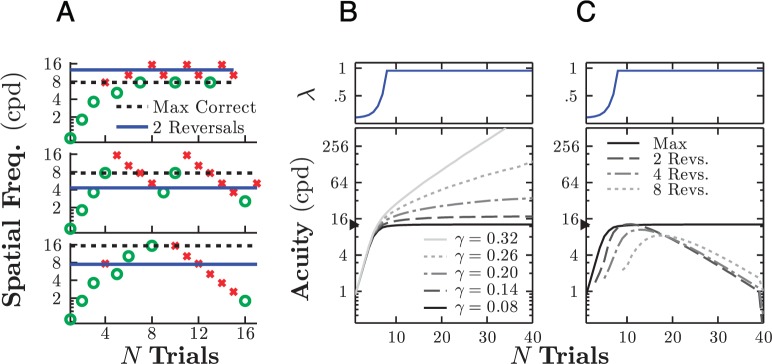Figure 9.

Effect of nonstationary inattentiveness. (A) Example adaptive staircases from three infants, demonstrating a “compliant” staircase (top: observer attentive throughout), a “sawtooth” staircase (middle: transient loss of attention), and a “Λ”-shaped staircase (bottom: permanent loss of attention). Horizontal lines indicate the resultant threshold estimates using either max correct (dashed) or two reversals (solid). (B) Monte Carlo simulations (N = 20,000), demonstrating how an increase in lapse rates (inattentiveness) over time can affect threshold estimates given various thresholding strategies. (C) Monte Carlo simulations, demonstrating how the max correct rule is liable to produce inflated threshold estimates as the guess rate, γ, increases.
